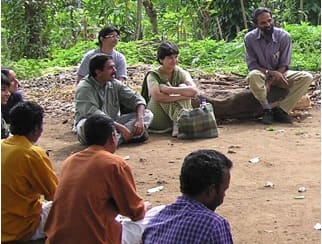
Management
Management and governance – while closely intertwined in practice – are best understood as separate activities. Management pertains to using the means and carrying out the actions to achieve a certain objective, i.e. “the process of assembling and using sets of resources in a goal-directed manner to accomplish tasks in an organization”.[1] For example, a given territory can be managed to ensure the maintenance of its ecological functions through various steps: planning; organising; budgeting and allocating resources; carrying out various activities, including surveillance and enforcement of rules; monitoring results; evaluating and re-adjusting plans according to lessons learned; etc. The necessary resources may include human resources with relevant capacities, experience and skills; financial resources; various types of information (e.g., legislation, ecological data, financial markets); as well as natural resources (e.g., land, water, seeds, animal and plant species, pollinators).
In the context of processes by which ICCAs—territories of life are maintained and strengthened by their custodians, management usually includes mapping the territory of life; demarcating its borders and essential features; understanding, as a group, what is needed to achieve the goals identified by the community; enforcing the rules of access and use agreed by the community (possibly compiled into a community protocol; see #Indigenous customary law and community protocols; #Appropriate support); carrying out surveillance to secure respect of the rules; stopping and retributing violators; gaining some income for the community to sustain surveillance and other on-going necessary activities; etc.
While a community governance role is necessary to have an ICCA—territory of life, a management role is not. Thus, if a state ‘delegates’ the management of a territory of life to an indigenous people or local community, or proposes a co-management arrangement to them, this generally falls short of true recognition of their rights of self-determination.
Some custodian peoples and communities chose not to directly manage their territories and areas and the natural resources found therein. This could be for technical reasons (lack of technology or equipment), legal reasons (safety requirements) or practical reasons (lack of manpower). Their custodianship role is exercised through their governance, while the implementation of the decisions (management) is entrusted to others.[2]
Key references:
Hitt, Black and Porter, 2011; Kothari et al., 2015; Worboys and Trzyna, 2015.
[1] Hitt, Black and Porter, 2011, page 4.
[2] For instance, they may not be the ones who cut or harvest trees, leaving such activities to hired professionals, or they may sign a land stewardship agreement with an NGO in charge of monitoring key species in their territory.